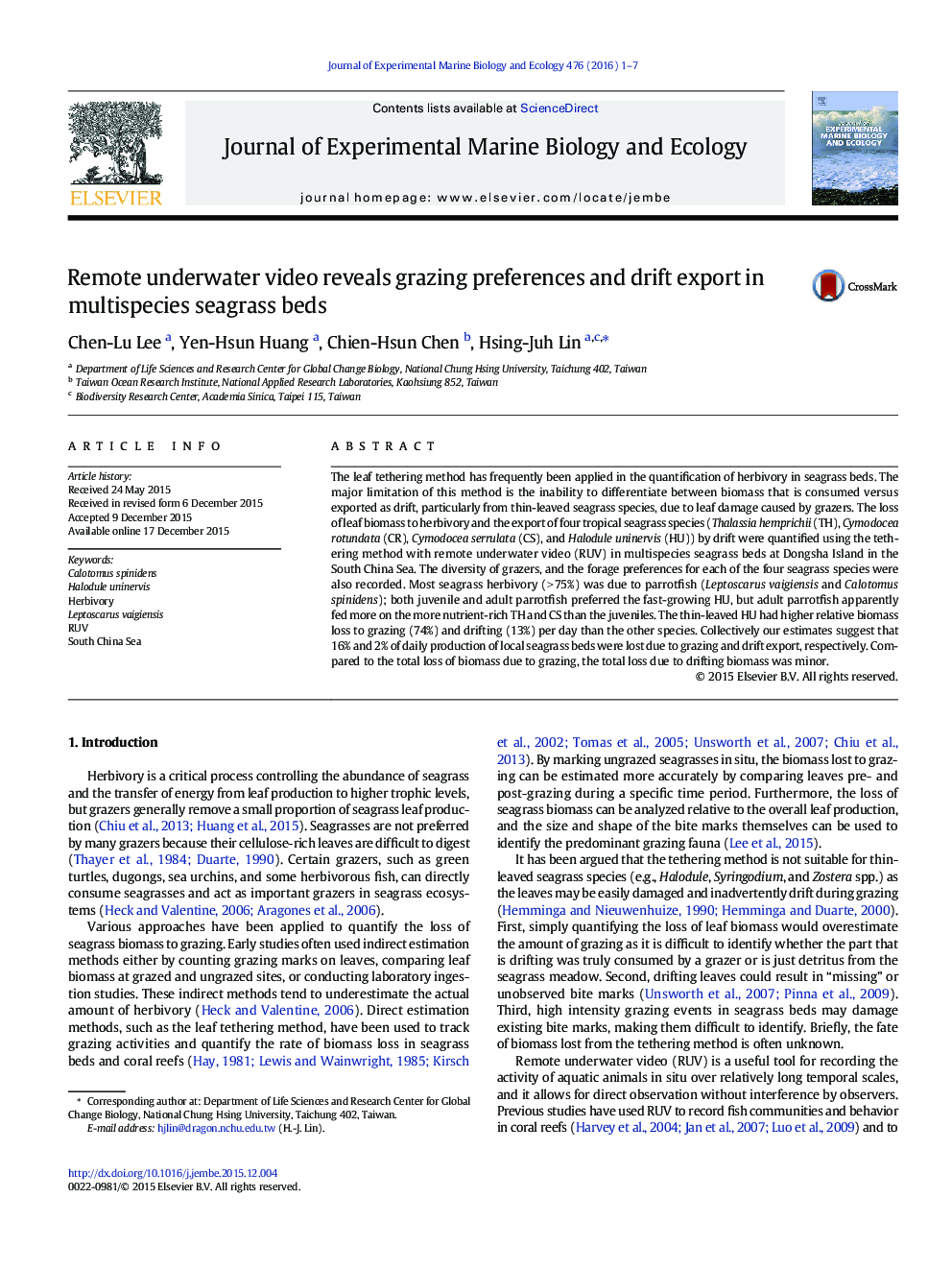| Article ID | Journal | Published Year | Pages | File Type |
|---|---|---|---|---|
| 4395338 | Journal of Experimental Marine Biology and Ecology | 2016 | 7 Pages |
•Most seagrass herbivory was due to parrotfish.•Juvenile parrotfish preferred fast-growing seagrasses.•Adult parrotfish preferred more nutrient-rich seagrasses.•In total, 2% of leaf production drifted due to inadvertent removal during herbivory.•The biomass lost due to drift was minor compared to that lost due to grazing.
The leaf tethering method has frequently been applied in the quantification of herbivory in seagrass beds. The major limitation of this method is the inability to differentiate between biomass that is consumed versus exported as drift, particularly from thin-leaved seagrass species, due to leaf damage caused by grazers. The loss of leaf biomass to herbivory and the export of four tropical seagrass species (Thalassia hemprichii (TH), Cymodocea rotundata (CR), Cymodocea serrulata (CS), and Halodule uninervis (HU)) by drift were quantified using the tethering method with remote underwater video (RUV) in multispecies seagrass beds at Dongsha Island in the South China Sea. The diversity of grazers, and the forage preferences for each of the four seagrass species were also recorded. Most seagrass herbivory (> 75%) was due to parrotfish (Leptoscarus vaigiensis and Calotomus spinidens); both juvenile and adult parrotfish preferred the fast-growing HU, but adult parrotfish apparently fed more on the more nutrient-rich TH and CS than the juveniles. The thin-leaved HU had higher relative biomass loss to grazing (74%) and drifting (13%) per day than the other species. Collectively our estimates suggest that 16% and 2% of daily production of local seagrass beds were lost due to grazing and drift export, respectively. Compared to the total loss of biomass due to grazing, the total loss due to drifting biomass was minor.
